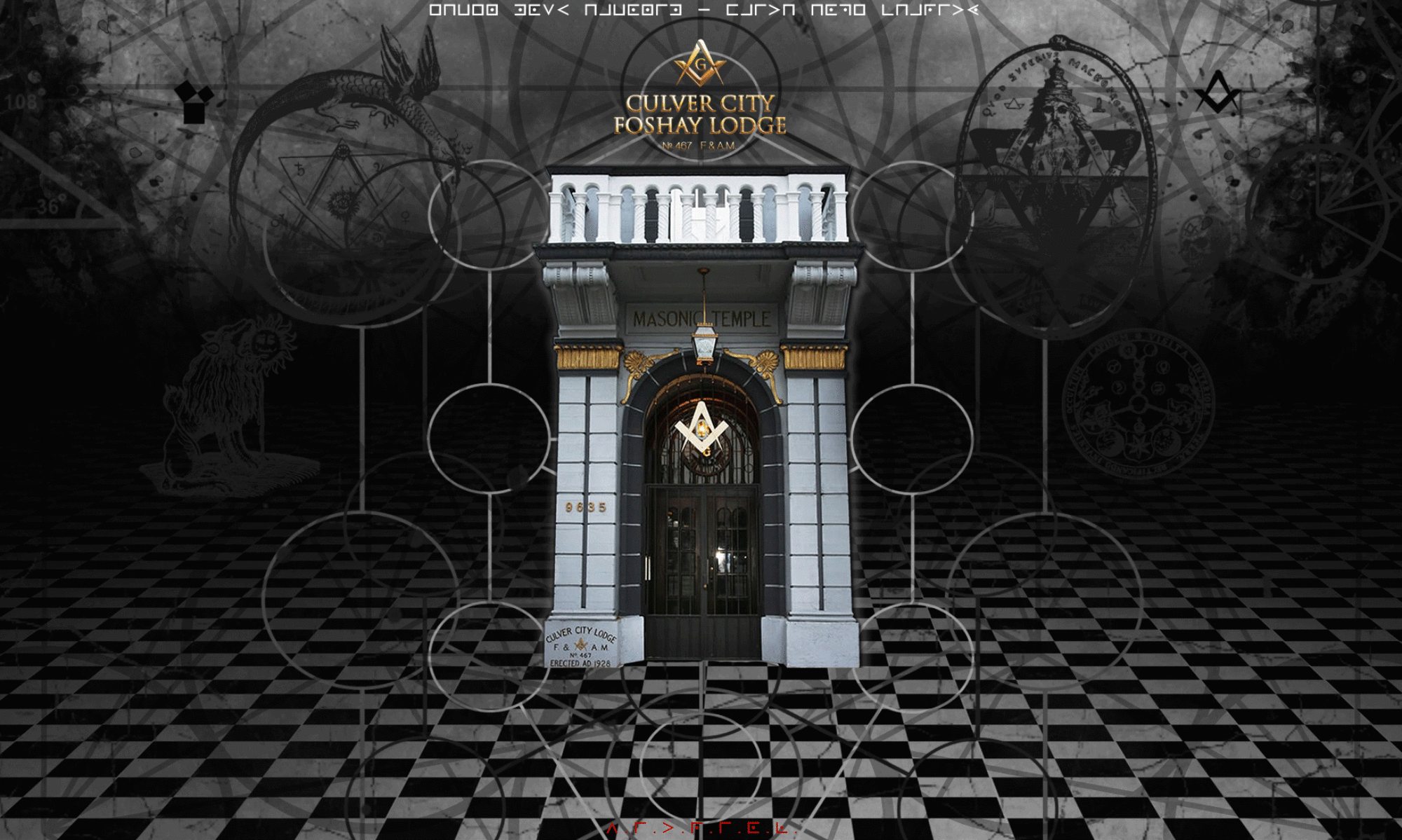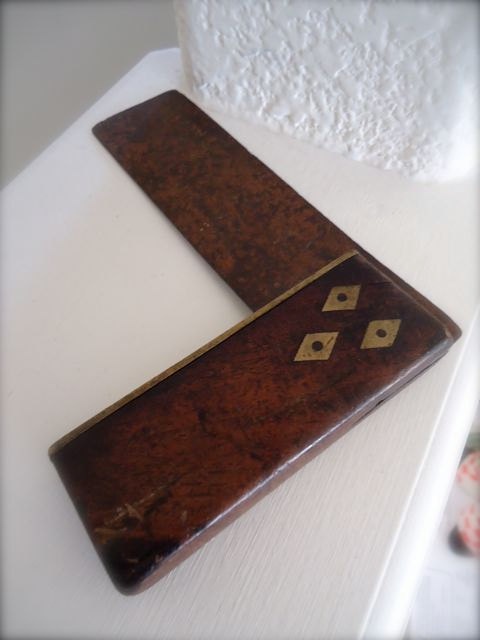FROM THE HALL OF KNOWLEDGE
The Jungles of Venus, Giant Ants, and Freemasons
By Curtis Scott Shumaker, P.M.
One of the most interesting aspects of becoming a Mason involves how we may see the world in a new light. Works of art, architecture, literature, film, and music that we encountered before joining the fraternity sometimes reveal new meanings to the initiated. Images, phrases, and concepts that once seemed mysterious or incidental acquire deeper resonances as we recognize connections to our newly gained symbolic and intellectual knowledge. From the librettos of Mozart’s operas to the choral lyrics of Beethoven, from the novels of Mark Twain to the poems of Rudyard Kipling, from the animations of Walt Disney to groundbreaking TV series Battlestar Glactica and Twin Peaks, we are continually surprised by references to our craft, leading us to richer insights into familiar works.
In my case, the most recent occurrence of this experience came when I returned home to Oklahoma for Christmas, and looking for some light reading, came across a series of old science fiction novels written by Ralph Milne Farley in the mid-1920s, which I had not read since I was about 14. The books (The Radio Man, The Radio Beasts, The Radio Planet) were much as I remembered them: hastily written pulp fiction with rather generic plot lines with fantastic creatures and beautiful princesses in peril. Always enjoyable to read, but not great literature. Guilty pleasures, as we say in the world of literary academia.
To summarize briefly the plot: A brilliant radio engineer named Myles Cabot invents a device that teleports him to Venus, a planet that, in the early 20th century, still held the promise of life beneath its opaque cloud layer. Cabot finds a rich, tropical ecosystem ruled over by the Formians, a race of giant ants which enslaves the Cupians, a humanoid species with antlike antenna. Neither race uses sound for speech; rather, they communicate by radio waves through their biological antenna. Cabot quickly devises a mechanical apparatus which enables him to interact with both groups. He falls in love with Lilla (a princess of a royal but powerless Cupian family), leads a revolution against the Formians, and establishes an enlightened, just civilization for the newly freed slaves. In the second novel, the ants stage their own rebellion and kidnap Princess Lilla, requiring more heroics from Cabot. The third novel involves a war with a race of giant bees, and of course Cabot must once again rescue his princess. Standard stuff for the early, primitive era of science fiction, much like the John Carter of Mars fiction by Edgar Rice Burroughs.
However, as I reread the books, I began to notice a number of Masonic references, just a few at first, but eventually cumulating in a serious and effective expression of Masonic values. I will mention only a few points here, leaving the readers to ferret out the rest, assuming any of them decide reading such fiction is worth their time (I’m on the fence on the matter—my time might have been better spent rereading Moby Dick).
First, all the intelligent races of Venus refer to their supreme being as “the Great Architect.” Later, a religious shrine is described as containing a cubical alter in the center of the room, surrounded by three large candles arranged in an equilateral triangle. In the first two novels, it is suggested that the source of these allusions is an ancient “lost religion.” In the third novel, The Radio Planet, Cabot finally encounters a temple of the mysterious order. After receiving a secret pass word from an adept, he repeats it to a guard outside the door of the inner room of the temple, who knocks three times on the door:
The knock was repeated from within, the door opened, and Myles entered to gaze upon a strangely familiar scene. The room was richly carved and colored. On three sides hung the stone lamps of the Vairkings. Around the walls sat a score or more of long robed priests, some on the level and some on slightly raised platforms. On the highest platform of all, directly opposite the point where Cabot had entered, sat the only hooded figure in the chamber, quite evidently the leader . . .
Take away the robes and substitute a top hat for the leader’s hood, and this could be a description of our own lodge, or any lodge.
However, the most meaningful, albeit indirect, references to Masonry flow from the character and actions of Myles Cabot himself. He steadfastly represents the basic tenants and values of Masonry. The society he builds from the ruins of war and slavery is overseen by a pluralistic, constitutional government of the type Freemasons generally encourage. Also, although Cabot is cast in the mold of early 20th century adventure heroes, full of what was then known as “derring-do” (a tendency to solve problems by grabbing a weapon and charging into the fray) his most important accomplishments involve scientific investigation and careful logic. Star Trek fans may recognize in him a prototype of Spock, who replies to dire threats with the dispassionate statement “fascinating,” more interested in knowledge and understanding than his own safety. Time and time again, when Cabot has been taken prisoner or otherwise placed in mortal danger, he observes his surroundings with a detached scientific inquiry, outwitting opponents and overcoming obstacles with calm reasoning rather than brawn and brute force. In fact, according to the author, Cabot’s most praiseworthy act of heroism is his construction of a complete radio apparatus from scratch in a stone age society, from the smelting of basic metals and complex alloys to the manufacture of electrical generators and vacuum tubes—a feat that consumes several chapters of The Radio Planet. Indeed, throughout the novels, I believe all the arts and sciences of the Staircase Lecture are represented, including the specific professions listed in the geometry section.
Intrigued by all these sophisticated notions in a work whose plot was driven by fantastic creatures and wish-fulfilling fantasies, I researched the author and discovered he was a Mason of prominent civic accomplishments. Farley was a nom de plume of Roger Sherman Hoar (1887-1963). A Harvard graduate and teacher of advanced engineering at Marquette University, he served in World War I, developing an astronomically-based method of aiming artillery. He served the Commonwealth of Massachusetts as an assistant attorney general and state senator, where he advocated for women’s right to vote. He also wrote a well-regarded book on constitutional law. No doubt this background helped him develop a realistic and historically relevant political world set amongst giant insects. In fact, his novels eerily seem to predict the circumstances of World War II, not only in the rapid rise of an humiliated enemy (ants/Nazis), but in the political circumstances of King Edward VIII, a Nazi sympathizer forced to abdicate in favor of his younger brother, an untested and (at first) unpopular King George VI. Although these real-life events took place over a decade after the writing of the Radio novels, Farley’s plot neatly parallels them.
Of course, this last bit is simply an interesting coincidence, but the overall point is that, since many authors and artists of various media are Freemasons, we, on becoming Masons, can learn much about how our values are projected into the world by their works. All we need do is take the care to observe them, even in the places least expected, much like the nameless Fellowcraft who sits by the acacia in the wilderness.




